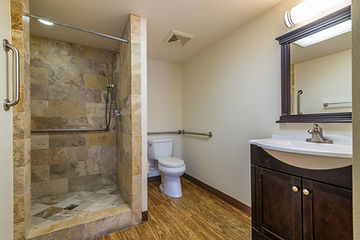
Libertana Halting the Spread of COVID-19 with New Epidemiology Program

Since the start of the COVID-19 pandemic, we have worked tirelessly to improve patient outcomes. Now, we’ve introduced a new FDA-approved wastewater-based epidemiology (WBE) program to detect COVID-19 in residential care facilities for the elderly (RCFEs).
Why use WBE? When a COVID-19 outbreak occurs, the virus is often present in wastewater. WBE testing allows us to test pooled samples taken each day from wastewater at RCFEs. This is an effective preventative action to stem outbreaks before they occur. It’s more efficient and cost-effective than traditional testing methods, helping to save funding, and more importantly, lives.
“This technology has been in place for a long time, and we know it works,” said Libertana’s Executive Director Jonathan Istrin. “The elderly population is most vulnerable to the virus, so we must actively work to protect them during this time.”
How WBE Works to Protect Against COVID-19
WBE allows Libertana to test a large population at once instead of testing every person individually, which is costly and often inefficient. When it comes to WBE, the key is building permeability—or the extent to which occupants leave the facility at night and reenter in the mornings. Since most RCFE residents rarely leave the property—particularly during the pandemic—it is, easier to test this population than people in offices, schools or factories, who are always entering and leaving buildings.
If the pooled samples taken from wastewater yield a negative COVID-19 test result, then the RCFE’s residents do have to be tested individually. Sewers, thankfully, combine the data for us, offering easily accessible, aggregated samples.
WBE has long been used to prevent disease. Sewers were invented to fight against cholera, and WBE was utilized to identify opiate abuse and polio outbreaks in communities.
Our brand of testing uses composite sampling, which collects wastewater material multiple times over the course of a day to get a sample size. We collect the sample, ship it to an external lab overnight and assess 250 points on the virus to help identify strains.
“This information can be given to local health authorities,” said Istrin. “We’re finding the haystack that has the needle, rather than the needle in the haystack.”
“At Libertana, we’ve always looked to technology as a means to offer higher-quality care and services to our clients,” said Istrin. “When it comes to COVID, this is no different. We believe WBE testing has the potential to save lives, and we look forward to continuing to implement it.”

